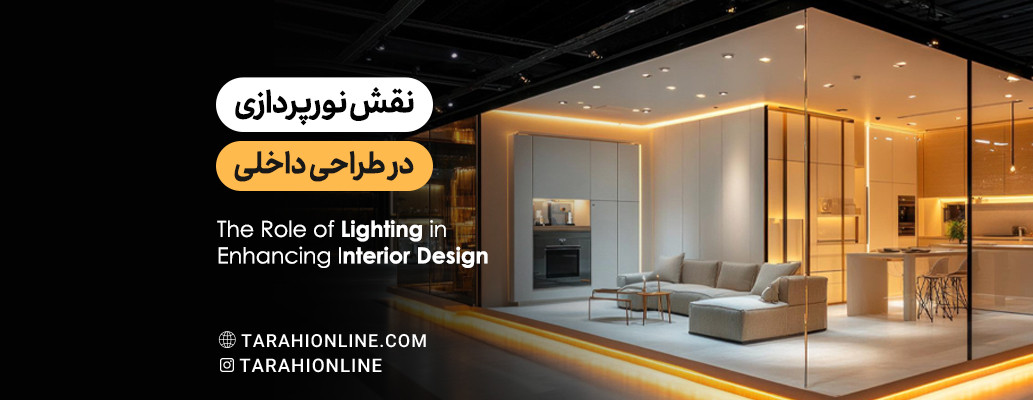
Light is the silent architect of our spaces, wielding the power to transform a room from mundane to magnificent. In interior design, lighting transcends its basic function of illumination to become a crucial element that shapes perception, influences mood, and defines spaces. As we delve into the intricate world of interior lighting, we'll explore how thoughtful illumination can not only enhance your home's aesthetic appeal but also improve your daily living experience. From the subtle play of natural light to the strategic placement of artificial sources, understanding the role of lighting in interior design is key to creating spaces that are both beautiful and functional.
Understanding the Power of Lighting in Interior Design
The role of lighting in interior design extends far beyond basic illumination. Studies by the Lighting Research Center show that properly planned lighting can increase property values by up to 12% and reduce energy consumption by 40%. In today's design landscape, lighting acts as both a functional necessity and a crucial design element that can make or break a space's overall aesthetic and functionality.
The Three Essential Types of Lighting
Ambient Lighting
-
Purpose: Creates the room's foundation of light
-
Provides overall illumination for safety and general visibility
-
Sets the base mood and atmosphere of the space
-
Usually accounts for 75% of a room's lighting
-
Task Lighting
-
Function: Illuminates specific activities
-
Essential for reading, cooking, and detailed work
-
Reduces eye strain and improves productivity
-
Should be glare-free and adjustable when possible
-
Accent Lighting
-
Goal: Adds drama and visual interest
-
Highlights architectural features and artwork
-
Creates depth and dimension in the space
-
Generally provides 3-5 times more illumination than ambient lighting
-
Strategic Lighting Placement
-
Room-by-Room Considerations
-
Living Room: Layer different light sources for flexibility
-
Kitchen: Focus on task lighting for work surfaces
-
Bedroom: Create a relaxing atmosphere with dimmable options
-
Bathroom: Even lighting for grooming tasks
-
-
Height and Positioning Guidelines
-
Wall sconces: 65-70 inches from the floor
-
Dining room pendants: 30-36 inches above the table
-
Kitchen island lighting: 30-36 inches above the counter
-
Natural Light Integration
Maximizing Natural Light
-
Window Treatment Strategies
-
Choose light-filtering options for privacy without sacrificing brightness
-
Use reflective surfaces to bounce light deeper into rooms
-
Consider motorized blinds for automated light control
-
Artificial Light That Complements Natural Light
-
Color Temperature Matching
-
Morning light: 2700-3000K
-
Midday light: 4000-5000K
-
Evening light: 2400-2700K
-
Common Lighting Mistakes to Avoid
-
Insufficient Light Layering
-
Relying solely on overhead lighting
-
Forgetting task lighting in crucial areas
-
Neglecting accent lighting for depth
-
-
Poor Placement
-
Creating unwanted shadows
-
Incorrect height installation
-
Uneven light distribution
-
Smart Lighting Technologies
Modern Lighting Controls
-
Smart Bulbs and Systems
-
Programmable schedules
-
Color temperature adjustment
-
Integration with home automation
-
Energy Efficiency
-
LED Benefits
-
75% less energy consumption
-
25 times longer lifespan
-
Improved color rendering options
-
Lighting Design Trends
-
Current Trends
-
Biodynamic lighting systems
-
Minimalist fixture designs
-
Sustainable lighting solutions
-
-
Timeless Elements
-
Classic chandelier styles
-
Versatile track lighting
-
Professional Lighting Design Tips
Planning Your Lighting Scheme
-
Start with a lighting plan before renovation
-
Consider room functions and traffic patterns
-
Include dimming capabilities for flexibility
-
Account for seasonal light changes
Budget Considerations
-
Cost-effective solutions
-
Prioritize key areas
-
Phase implementation
-
Impact on Well-being
Scientific research shows that proper lighting can:
-
Improve mood by 15-20%
-
Increase productivity by up to 18%
-
Enhance sleep quality when properly aligned with circadian rhythms
The artful integration of lighting in interior design is more than just an aesthetic choice—it's an investment in your space's functionality, your well-being, and your home's value. By understanding and implementing proper lighting principles, you can create environments that not only look stunning but also support your daily activities and enhance your quality of life. Whether you're planning a complete renovation or simply looking to upgrade your current lighting scheme, remember that good lighting design is like a well-conducted orchestra—each element plays its part in creating a harmonious whole. The time and thought invested in your lighting design today will continue to brighten your space and uplift your spirits for years to come.